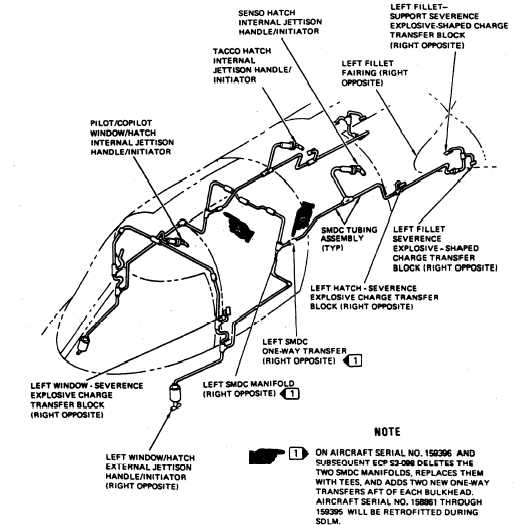on the annunicator panel (located on the center
instrument panel) to come on.
ALTITUDE SENSOR SWITCH.— An
altitude sensor switch is located on the forward
bulkhead of the camera compartment. The
sensor switch monitors the aircraft altitude. When
the eject mode selector valve handle is in the up
or SELF-EJECT position and the aircraft altitude
is less than 15,000 feet, the sensor switch causes
the seat select indicator on the annunciator panel
(located on the center instrument panel) to come
on. When the aircraft altitude reaches or exceeds
15,000 feet, the seat select indicator goes off.
GROUP EJECT INDICATORS.— A group
eject indicator is installed on the SENSO and
TACCO instrument panels. When the pilot’s or
copilot’s selector valve handle is in the down or
GROUP EJECT position, a switch in the selector
valve completes an electrical ground, and causes
both group eject indicators to come on. When
both selector valve handles are in the up or SELF
EJECT position, the group eject indicators go off.
EJECTION WARNING SYSTEM.— The
ejection warning system is used to warn
the TACCO and SENSO that an emergency is
occurring, and that seat ejection is about to be
initiated. The system uses an eject switch on the
eyebrow panel, an emergency power unit, a
flasher, and eject indicators on the TACCO and
SENSO instrument panels. The pilot or copilot
sets the eject switch to EJECT, which turns on
flashing eject indicators on the TACCO and
SENSO instrument panels.
Figure 6-7.—Emergency egress system components and plumbing.
6-12



